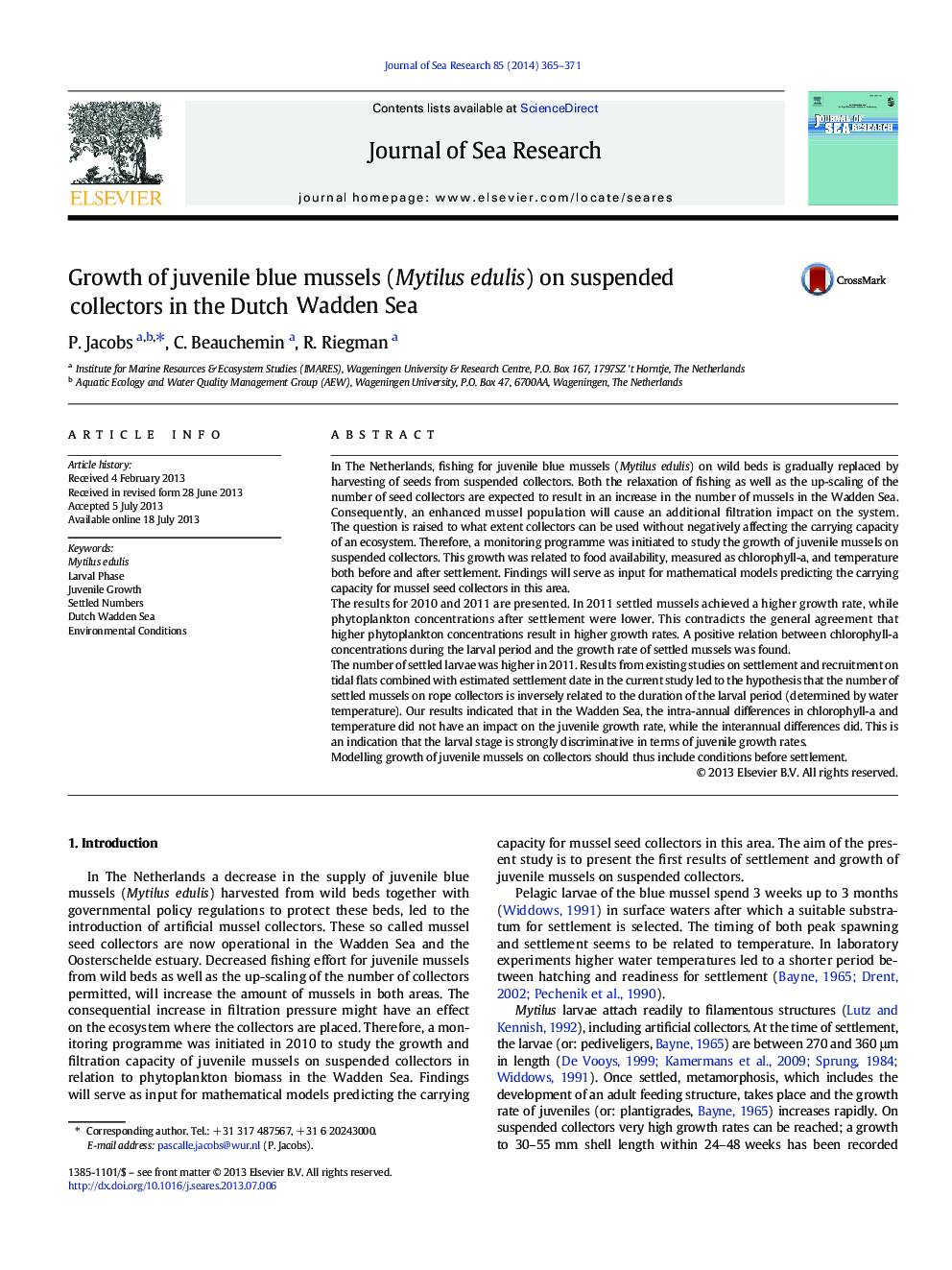| Article ID | Journal | Published Year | Pages | File Type |
|---|---|---|---|---|
| 6387421 | Journal of Sea Research | 2014 | 7 Pages |
â¢Juvenile mussel growth rates & settled numbers on collectors differed between years.â¢No relation existed between phytoplankton and mussel growth rate after settlement.â¢Phytoplankton availability for larvae determined growth rate for juveniles.â¢Settled mussel numbers inversely correlated with the duration of the larval period.
In The Netherlands, fishing for juvenile blue mussels (Mytilus edulis) on wild beds is gradually replaced by harvesting of seeds from suspended collectors. Both the relaxation of fishing as well as the up-scaling of the number of seed collectors are expected to result in an increase in the number of mussels in the Wadden Sea. Consequently, an enhanced mussel population will cause an additional filtration impact on the system. The question is raised to what extent collectors can be used without negatively affecting the carrying capacity of an ecosystem. Therefore, a monitoring programme was initiated to study the growth of juvenile mussels on suspended collectors. This growth was related to food availability, measured as chlorophyll-a, and temperature both before and after settlement. Findings will serve as input for mathematical models predicting the carrying capacity for mussel seed collectors in this area.The results for 2010 and 2011 are presented. In 2011 settled mussels achieved a higher growth rate, while phytoplankton concentrations after settlement were lower. This contradicts the general agreement that higher phytoplankton concentrations result in higher growth rates. A positive relation between chlorophyll-a concentrations during the larval period and the growth rate of settled mussels was found.The number of settled larvae was higher in 2011. Results from existing studies on settlement and recruitment on tidal flats combined with estimated settlement date in the current study led to the hypothesis that the number of settled mussels on rope collectors is inversely related to the duration of the larval period (determined by water temperature). Our results indicated that in the Wadden Sea, the intra-annual differences in chlorophyll-a and temperature did not have an impact on the juvenile growth rate, while the interannual differences did. This is an indication that the larval stage is strongly discriminative in terms of juvenile growth rates.Modelling growth of juvenile mussels on collectors should thus include conditions before settlement.
